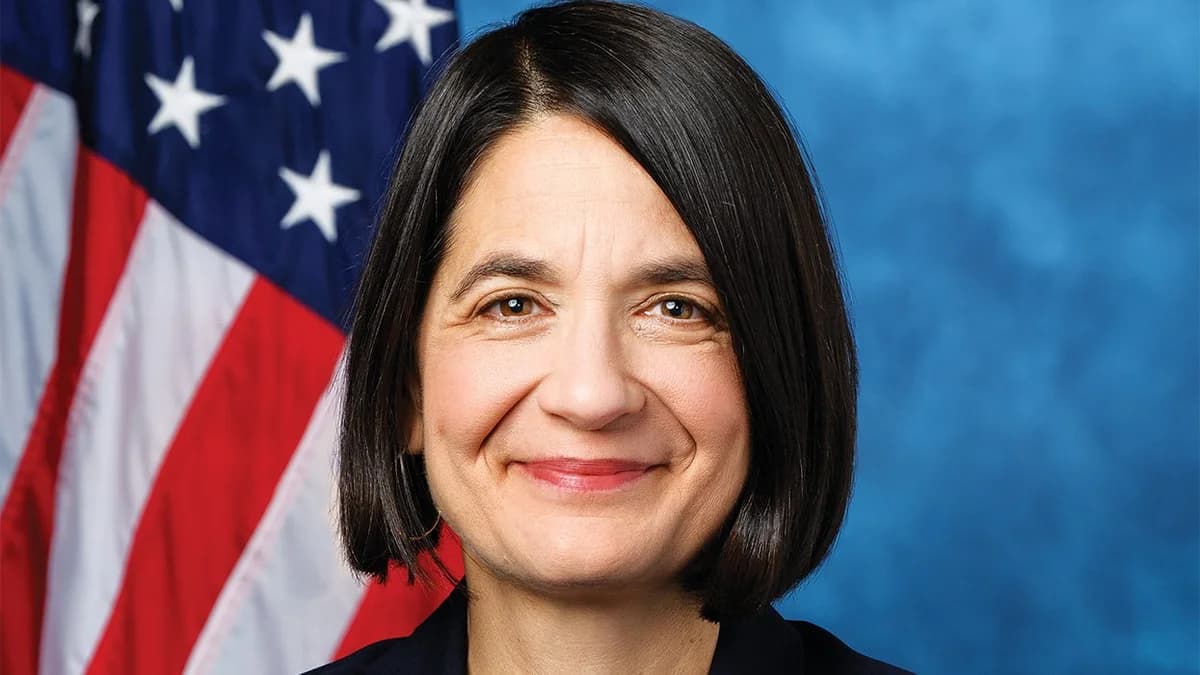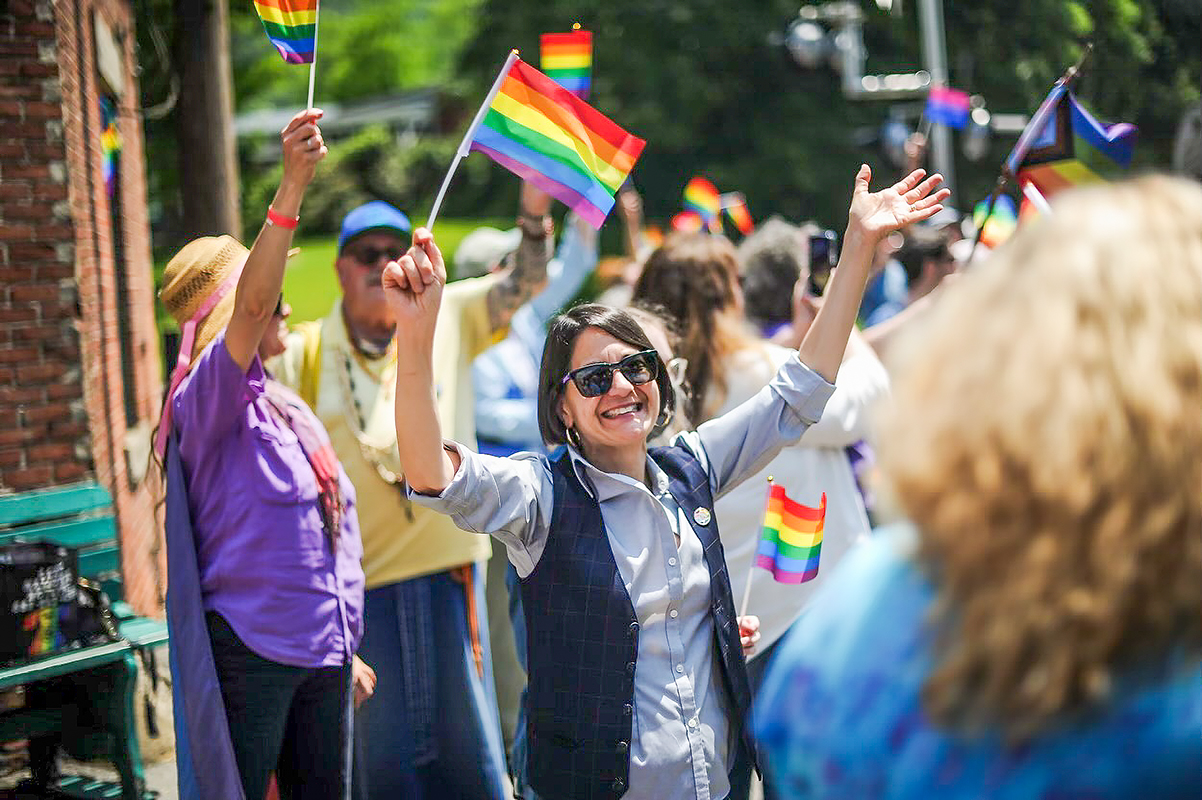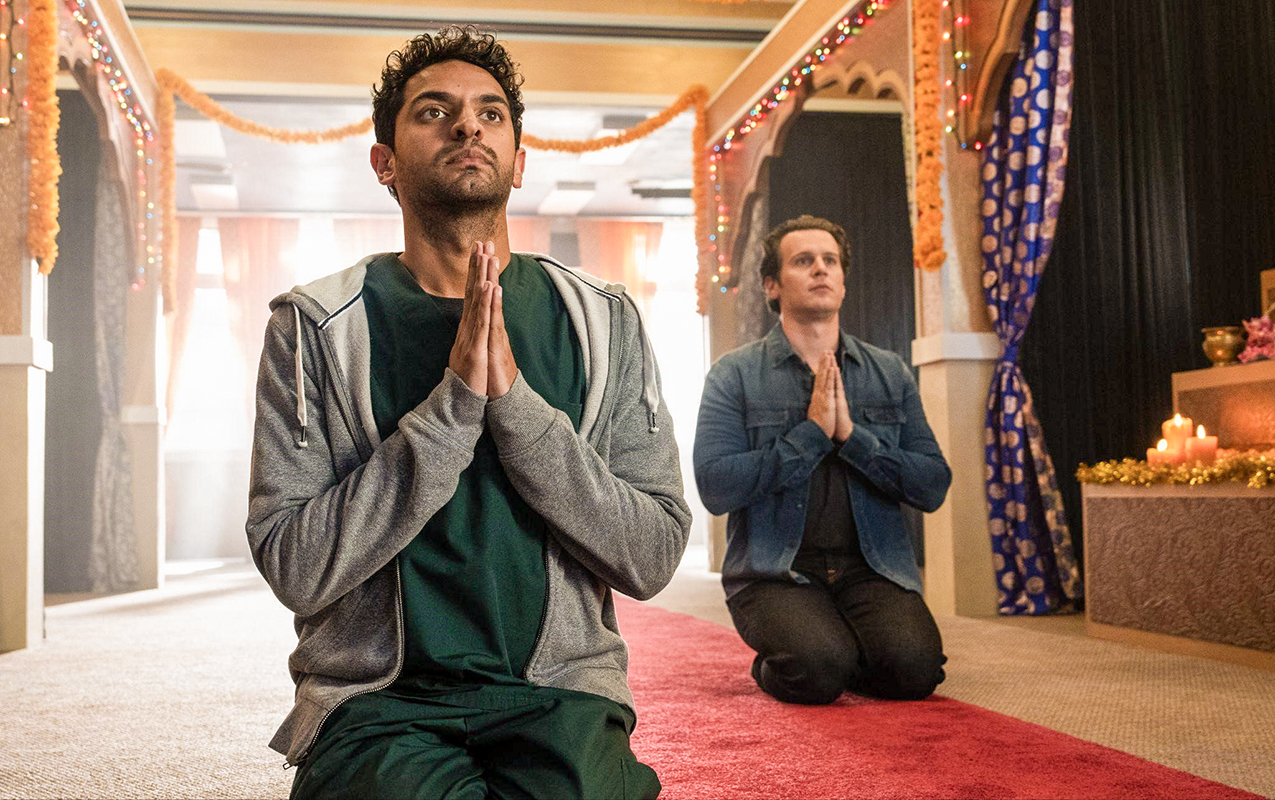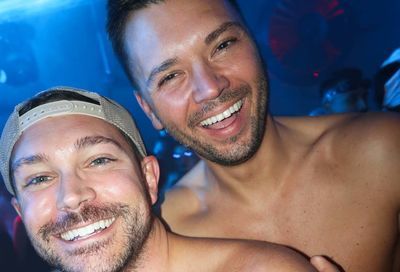Wedded Bliss
Planning the Perfect Gay & Lesbian Wedding / Marriage
 |
The history of romance is filled with eloquent phrases and evocative sweet nothings that resonate between the hearts of lovers.
“FMM143 ” might not, at first listen, sound like a phrase that will flow through the ages. But for Ben Baker and Christian Edvardsen, those six letters and numbers held all the love they felt for each other when they decided to take the next step in their relationship: marriage.
When Baker and Edvardsen met at JR.’s in the spring of 1998, Edvardsen was a Georgetown University senior with a job in San Francisco lined up for the fall. Following what they refer to affectionately as the “summer of love,” Edvardsen moved to the West Coast.
But after a year of long distance romance filled with daily phone calls and emails, and coast-to-coast flights for monthly visits — a perk of Baker’s position as an airline web design manager — Edvardsen knew in his heart that things needed to change.
“I can’t spend my whole life wondering ‘what if?'” Edvardsen recalls thinking to himself, so he moved back to Washington, started a new job in online marketing for a major newspaper, and continued nurturing his relationship with Baker.
In the summer of 2000, Edvardsen and Baker were in San Francisco again, this time for a visit to enjoy the city’s famed Gay Pride festivities. They were so inspired by the aspects of Pride devoted to weddings that one night during the trip, they found themselves discussing the possibility of having a ceremony of their own.
“I asked Christian what he thought we should get inscribed on rings if we had a wedding,” Baker remembers, stopping short of an outright proposal. Without missing a beat, Edvardsen answered, “FMM143,” referring to the couple’s shorthand email signature during their year of living on different coasts — “FMM” meaning “forever my man” and “143” referring to the number of letters in each of the words “I love you.”
“He really liked that,” the 27-year-old Edvardsen says, smiling boastfully.
“Liked it?” Baker, 28, interjects with a chuckle. “I burst into tears!”
Two weeks later, back home in Washington, they set a date for 2001 and dove headfirst in the details of planning their wedding.
Tying the Knot
 |
An ever-increasing number of gay and lesbian couples are choosing to formalize their committed relationships with a wedding ceremony, a trend impacted in no small part by advances in legal recognition for same-sex relationships — most notably the marriage-like civil unions offered in Vermont, as well as Domestic Partnership registries that exist, with varying degrees of benefit, in jurisdictions throughout the country, including Washington, D.C.
Religious institutions also find same-sex marriage among the hottest of their hot-button issues, with a growing number of congregations in a range of denominations now supporting gay and lesbian couples with marriage-like ceremonies. And such social standbys as the wedding announcement pages in major daily newspapers are evolving rapidly, with many now including gay and lesbian couples alongside their straight counterparts or in separate “Celebrations” sections — as with The Washington Post — created to accommodate the call for recognition of the lifetime commitments gays and lesbians make to each other.
“That’s all peachy keen,” many say. But when you’re a gay man or woman who didn’t exactly study the fine details of all the straight weddings you attended — unable to foresee the day and age when you and your beloved could feel free to have such a ceremony yourself — planning a wedding can feel like a scary step into uncharted territory.
Fear not. It’s simply a matter of getting a clear picture of what you want your special day to look like, and taking everything step-by-step. Besides, rule number one when you’re thinking about waltzing down the aisle is simple: There are no rules. You can be as traditional or unconventional as you like.
After all, for all the progress made in recognizing gay and lesbian relationships, there’s still a lot to be done, and there will likely always be fellow citizens who refuse to acknowledge the importance and sanctity of same-sex commitments, no matter what you do to celebrate and formalize yours. Gay and lesbian weddings, therefore, should ultimately be approached to mean more to you and your loved ones than the society-at-large in which you lead your life.
Hitting the Spot
Location is the most significant choice you’ll make about your ceremony. Feeling religious, but find church spaces to be too stuffy? Or do you want to keep your celebration dogma-free? Take it outside to a park, or find an attractive public rental space — a hotel ballroom, restaurant, club or art gallery, to name just a few — that tickles you and your partner’s fancy. Or feel free to search out sacred space in gay-friendly religious buildings if you want a spiritually-oriented ceremony but aren’t aligned with a particular church or synagogue. Or make it a fabulous domestic affair at your home, or the home of a friend or family member.
In other words, let your imagination run wild and do whatever appeals to you.
Mindy and Melissa
 |
“We give brunches.”
Melissa Schraibman, a 34-year-old Justice Department attorney, wryly sums up the dominant social force in her life with Mindy Michels, 31, the coordinator of the Gay, Lesbian, Bisexual, Transgender and Ally Resource Center at American University. (One recent weekend affair, dubbed “Girls and Grits,” drew more than sixty women to their Takoma Park home.)
There was no question, therefore, when planning their July 2001 nuptials that brunch would be a major component. That’s what made Quiet Waters Park in Annapolis perfect. The park’s garden space proved to be a great setting for their Reform Judaism ceremony, held on a Sunday morning, and the on-site, air-conditioned banquet facility could easily accommodate an extravagant brunch with all the trimmings — as well as function as back-up space for their ceremony had the weather not cooperated.
Michels and Schraibman had over a hundred guests at their wedding, and following a honeymoon trip to Panama, they traveled to Los Angeles, where Michels grew up, for another brunch with nearly a hundred more West Coast friends, family and extended family members who couldn’t make the trip to Maryland.
How Much Will It Cost?
“Instead of having a specific budget cap,” Michels says, “our goal was to try and keep expenses down. So we looked at each element to see what was the most cost-effective way to approach it.” Michels and Schraibman’s choice of a county-funded venue for both their ceremony and reception meant they didn’t have to spring for the profit-driven rates at hotels and other venues.
They also turned to creative friends who could pitch in with tasks such as decoration and photography at non-commercial rates. The couple’s overall cost for the wedding — including everything from wardrobe and printing expenses to a DJ and string quartet — came in around $8,000.
There’s no set formula on how much you have to spend for a wedding — you can go as economical or elaborate as you choose. If breaking the bank is going to be problematic in the long run, simply decide up front how much you can spend and make your choices accordingly.
Family Matters
Wedding budgets can also be dramatically affected by contributions from parents, a factor that doesn’t always occur to gay and lesbian couples who, despite having supportive families, think of their ceremonies as something unusual enough that they’ll have to go it alone.
Once you announce your engagement, though, you may find that your parents have already set aside money for your wedding — albeit, perhaps an opposite-sex one — and they may be happy to channel it toward your same-sex ceremony if you’ve shared with them your happiness and your intention to make your relationship a lifetime commitment.
 |
After Ben Baker and Christian Edvardsen told their parents — four sets in all, in the wake of divorce and remarriage on both sides — about their plan to wed, they received generous contributions toward the June 2001 event, allowing them to set a budget of $25,000. The result, what they decided to call a Commitment Celebration, was an unabashedly romantic and elegant evening affair — complete with cocktails, ceremony, dinner and dancing — held in the mansion at Strathmore Hall Arts Center in North Bethesda and followed by a honeymoon cruise in the Caribbean.
Coming from a conservative religious background, Baker initially found his family to be wary of a gay male couple having a wedding, although they had already proven to be supportive of his relationship with Edvardsen. “It was a step beyond their comfort zone,” says Baker. The couple worked with a freelance Unitarian Universalist minister to bolster the religious aspect of the ceremony.
“I wanted it to be taken seriously,” says Baker, “not like this was just some little thing where two gay guys were doing a mock marriage. For my family, bringing in a religious element helped achieve that.”
A total of 151 friends and family turned out for Baker and Edvardsen’s event, only one of whom had ever attended a same-sex wedding. “One of the things we think is really neat,” says Edvardsen, “is that those 150 other people can never again say that they haven’t been to one.”
Details, Details
If you follow the traditional wedding model you’ll find an abundance of elements — flowers, music, a ring exchange, attendants, a wedding cake, favors, gift registries — to consider incorporating into your ceremony and reception. But again, you’re free to choose what works for you and what you’d rather do without.
A planning timeframe of least six months works well for most couples. And you may even surprise yourself at just how much your event will come to strongly reflect your personality and interests.
After Alicia Wilson, 29, and Susan Guardado, 35, got engaged on Valentine’s Day in 2000, they set their sights on a “big church wedding,” held at River Road Unitarian Universalist Church in Bethesda the following October. The couple, both avid rugby players, had to work with their coach well in advance to be sure a match wasn’t scheduled on that same day so all their teammates could attend the wedding.
A tournament the weekend prior to the wedding, however, left Wilson praying to be spared from a common, visible injury, such as a black eye. And her choice of a long dress proved to be fortuitous, as it hid the “huge gash” on her shin. Wilson and Guardado are still waiting to take their honeymoon trip because, naturally, they had to stay in town for rugby matches the weekend after their wedding.
Cameron Griffith, 41, and McCain McMurray, 53, on the other hand, are theatre buffs. They wanted their December 2000 wedding to follow the pattern of their favorite pastime, dinner and a show. So they planned a small service at the Friends Meeting House in Dupont Circle, and put the majority of their energies toward a sit-down dinner and full-scale, original Sondheim-themed cabaret — produced by a friend in the musical theatre profession and starring prominent local actors — that followed at the nearby Westin Fairfax Hotel.
Likewise, cooking is such a passion for Peter Fitzgerald, 37, and Jim Whittaker, 45, that they’re finding their wedding plans for next fall are dominated by a careful search for the perfect caterer to make a reception at their home — following a service at the Universalist National Memorial Church — an enjoyable, culinary-focused celebration.
Love Is All Around
No matter how complex a route you choose to take with your wedding planning, be sure to pace yourself so you don’t get lost in details — or lose sight of why you’re doing all of this in the first place.
“We have no regrets,” Michels and Schraibman agree about their planning approach.
“We thought everything through very carefully in advance,” Michels says, “and we articulated our expectations very clearly to everyone involved.”
“I knew it would be wonderful,” Schraibman adds, “but it was better than we ever thought it would be.”
Baker and Edvardsen feel the same.
“When we finally got to the wedding,” Baker says, “the love that was in that room — just the overwhelming support that we had from all of our friends and family — I was completely unprepared for. It never occurred to me to think about what that would be like.
“That was the most unexpected surprise of the evening. The house looked like we wanted it to, the food was great, the drinks were good — but to share your love with people, that’s really the whole reason to get married. The experience was incredibly powerful.”
Support Metro Weekly’s Journalism
These are challenging times for news organizations. And yet it’s crucial we stay active and provide vital resources and information to both our local readers and the world. So won’t you please take a moment and consider supporting Metro Weekly with a membership? For as little as $5 a month, you can help ensure Metro Weekly magazine and MetroWeekly.com remain free, viable resources as we provide the best, most diverse, culturally-resonant LGBTQ coverage in both the D.C. region and around the world. Memberships come with exclusive perks and discounts, your own personal digital delivery of each week’s magazine (and an archive), access to our Member's Lounge when it launches this fall, and exclusive members-only items like Metro Weekly Membership Mugs and Tote Bags! Check out all our membership levels here and please join us today!























